
Seven. This is how many storybooks I own at this point in my life. To be honest, seven is a huge downgrade from these three shelves that I used to have a few months ago: one full shelf at the office, one full shelf at home and one, half-full shelf in the school…
I sigh and I try not to think about the absence of these shelves and, instead, I am thinking of my books circulating in the world, stuck all over the other, guest shelves, my storybooks out of reach but bringing joy to someone, somewhere. On a really good day, I can almost see myself as a fairy who sprinkles not golddust but beautiful pieces of literature.
The thing is, one cannot stay too far away from storybooks. Whether you want it or not, they start piling up, slowly, cautiously but still. Starting from scratch but I already have seven new books. Although ‘new’ should be taken with a pinch of salt here. I do recycle a lot, when possibly, and pick the gems to my collection in all the friendly charity shops. And some of them in my favourite book shop.
How do I choose the storybooks?

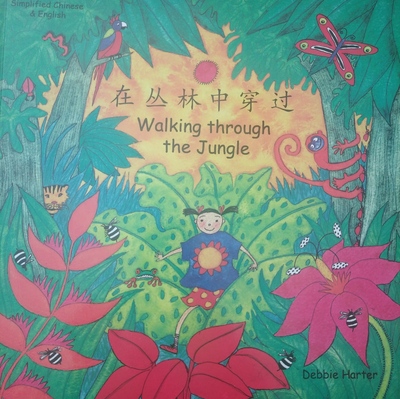
Oh, look, my unit 1 vocabulary! I buy the books to teach the lexis
In a perfect world there would be a library in which I would have a storybook for every unit (or for every set of vocabulary) that I am planning to teach. From colours, numbers, pets, transport, shapes to Christmas, Halloween and insects. This is probably never going to happen due to that inability to stick to a shelf for longer (see: Introduction) but it is good to daydream at least.
But I am trying!
When I choose storybooks, I like to look through the illustrations to see to what extent I will be able to use them with a specific topic. Sometimes I read the text, too, but I have also learnt to completely disregard it. The story can always be retold or adapted, graded to the needs of the people in the classroom and the lexis that they are working on at the moment.
That is why I bought Nick Sharratt and Sally Syme’s Something Beginning With Blue (yes, to teach colours!) and Debbie Harter’s Walking Through the Jungle, which has an amazing set of animals, habitats and verbs and which I will be also able to use alongside Walking in the Jungle by Super Simple Songs.

Grrrr! I buy the books to introduce and practise the structure
Because there is more than words, there is also the structure and sometimes I choose the books with the grammar that I will be able to introduce or to practise using a particular story. Oftentimes, the illustrations play the main role here (because, again, the story can be retold and adapted) although the story itself can help, too!
This is how Copy Cat by Mark Birchall landed in the bag and on the shelf. The adventures of the two friends, a cat and a dog, have a lot of verbs which means that I will be able to use it to practise Present Continuous or the Past Simple. I was also thinking of some functional language because the cat and the dog already talk a lot but they can talk even more in the future.
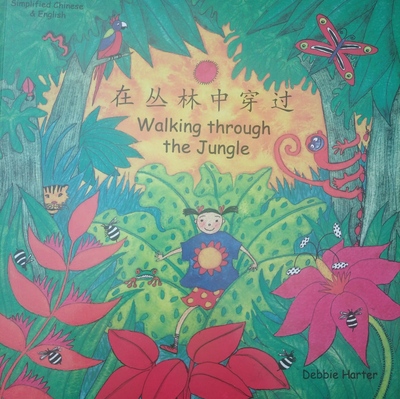
Say it again! I buy the books with repetitive language
Having read those two paragraphs, you might think that I buy the books not to read them but to look at the illustrations. It is not quite true. I use the text, too, but bearing in mind that my students are EFL kids, beginners, with somewhat limited exposure to the target language, I have to be selective as regards the text. At the same time, there are many amazing storybooks which can be used with a beginner child learner and that is because the language is repetitive and, even if it is above the child’s level and even if it has to be introduced, it is a good time investement because it appears throughout the entire story. Some good examples of that could be ‘I wrote to the zoo to send me a pet’ in Dear Zoo (another favourite) or ‘What do you see?’ in Brown Bear, Brown Bear, What do you see?.
The story mentioned above, ‘Walking Through the Jungle’ took a similar approach. The entire story is told through the following exchange: ‘Walking through the jungle, what do you see?’ ‘I think I see a lion chasing after me‘.
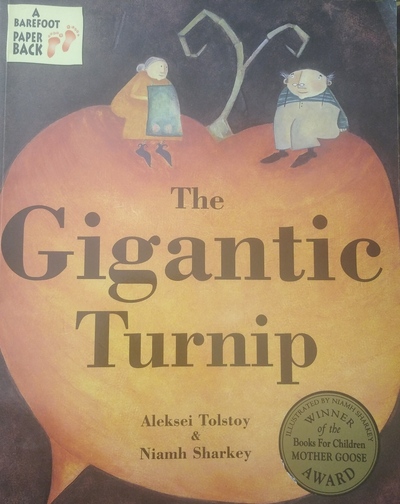
I know this story! I buy the books with traditional stories
It is great to see that traditional stories are making a comeback into the EFL VYL world. They are not the easiest material to work with, especially with the younger students, because the language is usually complex albeit beautiful, but they have one great advantage – the chances are that kids will be already familiar with them, the characters and the plot, because they are quite likely to have heard them before. At the very least, these are the stories that we can start with while taking the first steps in the traditional stories for pre-schoolers or primary.
That is why I picked up Alexei Tolstoy’s and Niamh Sharkey’s The Gigantic Turnip at the bookshop. I am hoping we are going to have a lot of fun with it, especially that the illustrations are beautiful and there is some repetition in the way the story is told.
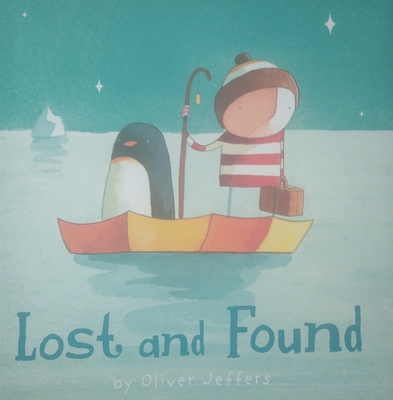
Hello again! I buy the books I used to have
The list of the storybooks that are important and close to my heart is long, very long, indeed. The list includes Elmer, Barry, the Caterpillar, Gruffalo and many others, all of the books that I love, that I have been using in class for ages and that I could just take out of my bag and have a lesson with, without any real preparation. The trialled and tested. The best friends forever. The personal top ten, twenty, thirty.
However, when I start recreating the shelf, I do not start from this list, although, perhaps that would be a good idea. Making a fresh start brings with it an opportunity to find new treasures and that is what I like to do, I am on the look-out, I keep my eyes open and when I bump into a title that I know and love, I just get it.
Only when I get to the point of ‘Oh, how I miss Elmer!’, do I go online and just order all of these staples.
This time, my oldie but good is an Oliver Jeffers’ book, Lost and Found which I love for his illustrations and stories.
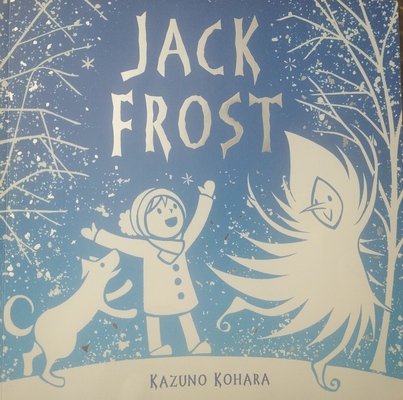
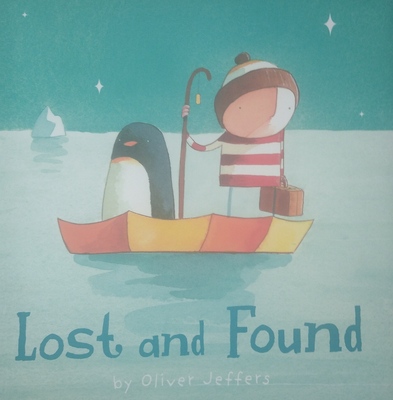

Guilty pleasures. I buy the books beacause they are just beautiful.
To be perfectly honest, I have to be double reasonable when it comes to this particular category because it is very easy to lose control and to end up with piles and piles of beautiful artifacts that I cannot really use in class. Self-restraint, moderation and temperance are not my favourite words but I have to make an effort, from time to time.
Once in a blue moon, however, comes the day when I am allowed to forage the shelves and the boxes and pick out publications which are (mainly) appealing visually. They are those that are to be used in my art lessons to develop taste, visual intelligence and symbolic representation in children.
This time, the two books that I picked for that very reason were Lauren Child’s Beware of the Storybook Wolves (for the trademark produced-by-a-child-like illustrations) and Kazuno Kohara’s Jack Frost (for the monochrome in black and in blue which will be a starting point for a lesson on the importance of colour). Or Lost and Found…
Most importantly…
It does not really matter why you buy the books as long as you buy them!
The stories that I could tell you of the books that were no one’s favourite and on no one’s wishlist but they came with other treasures or there was a really good price on them or they simply got donated and thus they made it to the shelf…True, they had to wait for their turn, for the inspiration to come, for this special lesson. Every dog has its day. Every storybook has its audience and its lesson.
Go, get the books! Bring them to the classroom!
Happy teaching!
P.S. The only problem now is that it is the middle of July and I already have a head full of new ideas and still – a good few weeks of waiting before I can put them into practice…
Anka, thank you for thie post! I have a great number of storybooks for very young learners and children up to 8 probably, but I am not good at finding books for 9-10 year olds. Perhaps you could recommend something? Could be either a picture book or just random stories, even from coursebooks if they are good (like Johnyy’s story in SM3). Thanks a lot!
Hello Maria,
Thank you for your feedback! It might be a bit of a challenge to find a book for this age, I age. The kids’ cognitive skills are on a high level already and they simply don’t find the regular storybooks interesting. But they are not really for the proper teens’ listerature yet. Perhaps there could be a mix of approaches and storybooks for this transition stage? Some of the storybooks that might still be interesting (for example, Rhinos don’t eat pancakes, I love it and I did it even with my teens:-) or some more advanced Dr Seuss titles. To that you can always add some of the Movers or Flyers stories, from the past papers, but treated as a story more than an exam task. And, last but not least, Storyfun for Movers and Flyers? Have a look. I am sure you will something there)))
Thanks for ideas! Yes, Storyfun is a good source and didn’t think about stories in the exam parts! Will definitely look for the story about Rhino))) xxx
You are welcome, Maria! xxx